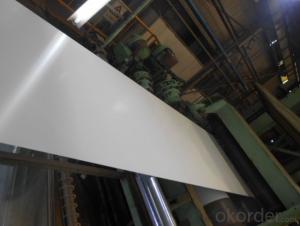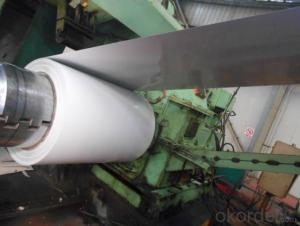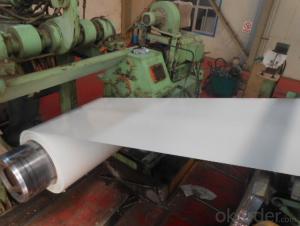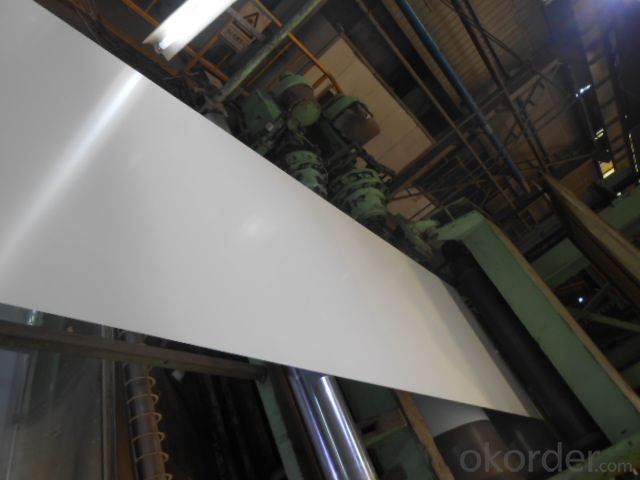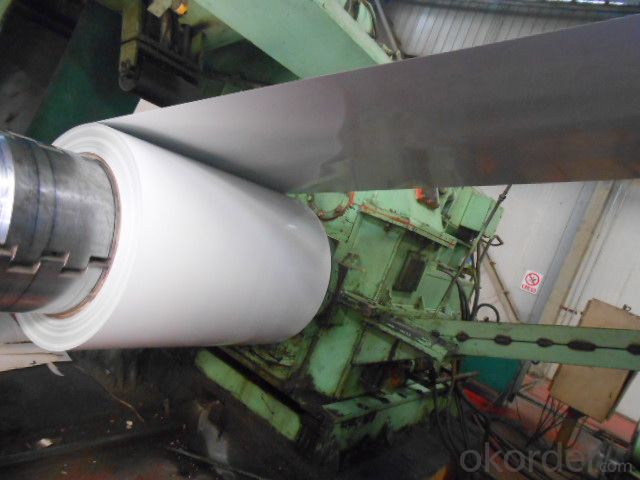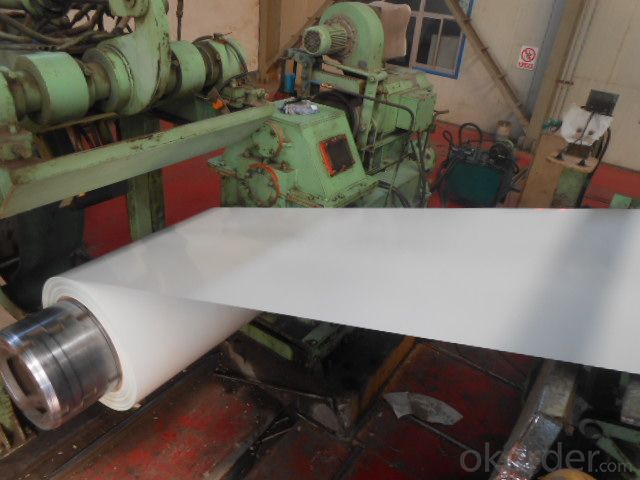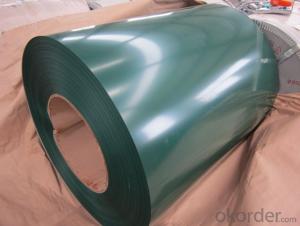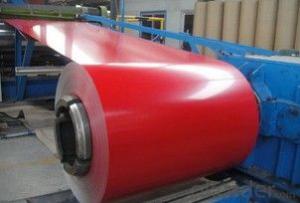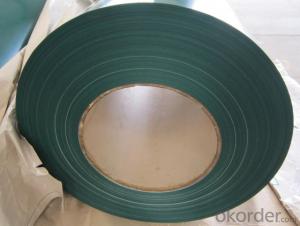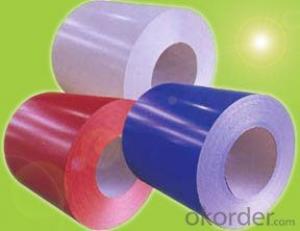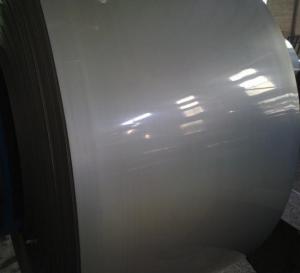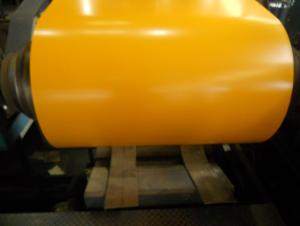PRE-PAINTED GALVANIZED STEEL COIL IN COILS
- Loading Port:
- Shanghai
- Payment Terms:
- TT OR LC
- Min Order Qty:
- 25 m.t.
- Supply Capability:
- 2000 m.t./month
OKorder Service Pledge
OKorder Financial Service
You Might Also Like
PRE-PAINTED GALVANIZED STEEL IN COILS
TOP COATING :5+13 PE,
BACK:5-7 MICRONS,EPOXY ZINC COATING:60g/m2 ( +/-10g/m2)
WEIGHT PER COIL:3-6tons COIL INNER DIAMETER:508mm
STANDARD:JIS G 3312 CGCC
SIZE: 0.50mm*1200mm*C
RED/GREEN/BLUE/BLACK/WHITE COLOR
Pre Painted Steel Coil is coated with organic layer, which provides higher anti-corrosion property and a longer lifespan than that of galvanized steel sheets.
The base metals for Pre Painted Steel Coil consist of cold rolled, HDG electro-galvanized and hot-dip alu-zinc coated steel. The finish coats of Pre Painted Steel Coil can be classified into groups as follows: polyester, silicon modified polyesters, polyvinylidene fluoride, high-durability polyester, etc.
The production process has evolved from one-coating-and-one-baking to double-coating-and-double-baking, and even three-coating-and-three-baking.
The color of the Pre Painted Steel Coil has a very wide selection, like orange, cream-colored, dark sky blue, sea blue, bright red, brick red, ivory white, porcelain blue, etc.
The Pre Painted Steel Coil can also be classified into groups by their surface textures, namely regular prepainted sheets, embossed sheets and printed sheets.
- Q: How are steel coils inspected for mechanical properties?
- Steel coils are inspected for mechanical properties through a series of tests and measurements. These include hardness testing, tensile testing, and elongation testing to determine the steel's strength, ductility, and overall quality. Additionally, non-destructive testing methods like ultrasonic testing and magnetic particle inspection are used to detect any potential defects or flaws in the coils. Overall, a combination of these inspection techniques ensures that steel coils meet the required mechanical properties for their intended applications.
- Q: What are the challenges faced in the recycling of steel coils?
- There are several challenges faced in the recycling of steel coils. Firstly, one of the main challenges is the collection and sorting process. Steel coils are often used in large-scale industries and construction projects, making it difficult to collect and transport them for recycling. Additionally, steel coils may be mixed with other materials, such as plastic or wood, which further complicates the sorting process. Another challenge is the size and weight of steel coils. Steel is a heavy material, and coils can be quite large, making it challenging to handle and process them efficiently. Specialized equipment and machinery may be required to move and separate the coils, which can add to the cost and complexity of the recycling process. Furthermore, the quality of steel coils can vary, which can impact their recyclability. Steel coils may have impurities or contaminants, such as oil or paint, which need to be removed before recycling. These impurities can affect the quality and integrity of the recycled steel, making it less desirable for certain applications. Additionally, the energy and resources required for recycling steel coils is a challenge. The recycling process involves melting down the steel, which requires a significant amount of energy. Furthermore, the transportation and processing of steel coils also consume resources and contribute to carbon emissions, making the recycling process less environmentally friendly. Lastly, the market demand for recycled steel coils can fluctuate, which can impact the viability of the recycling industry. The demand for steel products can vary depending on economic conditions and industry trends. This can make it difficult for recyclers to find buyers for their recycled steel coils, potentially leading to stockpiling or disposal challenges. Overall, while recycling steel coils offers environmental benefits and conservation of resources, there are several challenges that need to be addressed to ensure its successful implementation. These challenges include collection and sorting, handling and processing, quality control, energy and resource consumption, as well as market demand.
- Q: How are steel coils used in the manufacturing of aerospace components?
- Steel coils are used in the manufacturing of aerospace components as they provide a reliable source of high-quality steel. These coils can be shaped, cut, and formed into various aerospace parts such as fuselage frames, landing gear, engine components, and wing structures. The strength and durability of steel make it an ideal material for withstanding the extreme conditions and stresses experienced by aircraft during flight, ensuring the safety and performance of aerospace components.
- Q: steel structure
- Disadvantages Of Steel
- Q: i am looking for an exact process of how to forge damascus steel.any tips or pointers and web sites or tutoreals will be helpfull.
- hand made folding knife English tip, blade of Damascus metallic sort Rose, 2,5mm thickness, no liners, teja spring embellished by using metallic report and billet surrounded of chrome metallic. A Damascus blade knife is characterised by using a wavy, mottled visual allure on the blade that’s led to by using the approach used to shape the metallic. the technique of transforming into Damascus metallic is derived from a centuries-previous forging technique used to create blades that grew to become very just about mythical of their attractiveness for power and sharpness it exchange into reported a Damascus knife ought to shrink with the aid of a rifle barrel to boot as with the aid of a hair falling on the blade.
- Q: Okay, I have looked all ovcer the net and it says diamonds are stronger, but why? I mean, why is diamonds used for the top equiptment rather than steel?
- Because diamonds are denser but a lot more brittle they would break if used the same as most steel also they are vary rare so useing them in mass production would be redecliously expencive.
- Q: How are steel coils used in the manufacturing of automotive accessories?
- Steel coils are used in the manufacturing of automotive accessories as they are processed and shaped into various components such as brackets, frames, and supports. These coils are typically cut, molded, and stamped into specific shapes before being assembled into the final product, adding strength and durability to the accessories.
- Q: I play the guitar and recently found a new type of a guitar called the steel guitar, I don't want to play it or anything it's just I've never seen anything like it before and wonder what the function of it is and what are the differences to a classical guitar
- Different okorder /. If you just like the sound, take a serious look into slide guitar, not the same, but seriously tasty.
- Q: How are steel coils used in the construction of buildings?
- Steel coils are used in the construction of buildings primarily for their strength and durability. These coils are typically formed into beams, columns, and other structural components, providing a sturdy framework. Additionally, steel coils can be shaped into sheets or plates used for roofing, walls, and flooring, offering excellent resistance to weather and fire. Overall, steel coils play a crucial role in ensuring the stability and longevity of buildings.
- Q: Can steel coils be used in the production of packaging materials?
- Certainly, packaging materials can indeed utilize steel coils. Frequently, steel coils serve as the primary material in packaging items like metal strapping and steel banding. These coils possess remarkable strength, durability, and exceptional tensile strength, rendering them perfectly suitable for effectively securing and safeguarding diverse products throughout their transportation and storage. Furthermore, steel coils can be effortlessly molded and fashioned into various packaging elements, guaranteeing a dependable and secure packaging solution for an extensive array of industries.
Send your message to us
PRE-PAINTED GALVANIZED STEEL COIL IN COILS
- Loading Port:
- Shanghai
- Payment Terms:
- TT OR LC
- Min Order Qty:
- 25 m.t.
- Supply Capability:
- 2000 m.t./month
OKorder Service Pledge
OKorder Financial Service
Similar products
Hot products
Hot Searches
Related keywords
